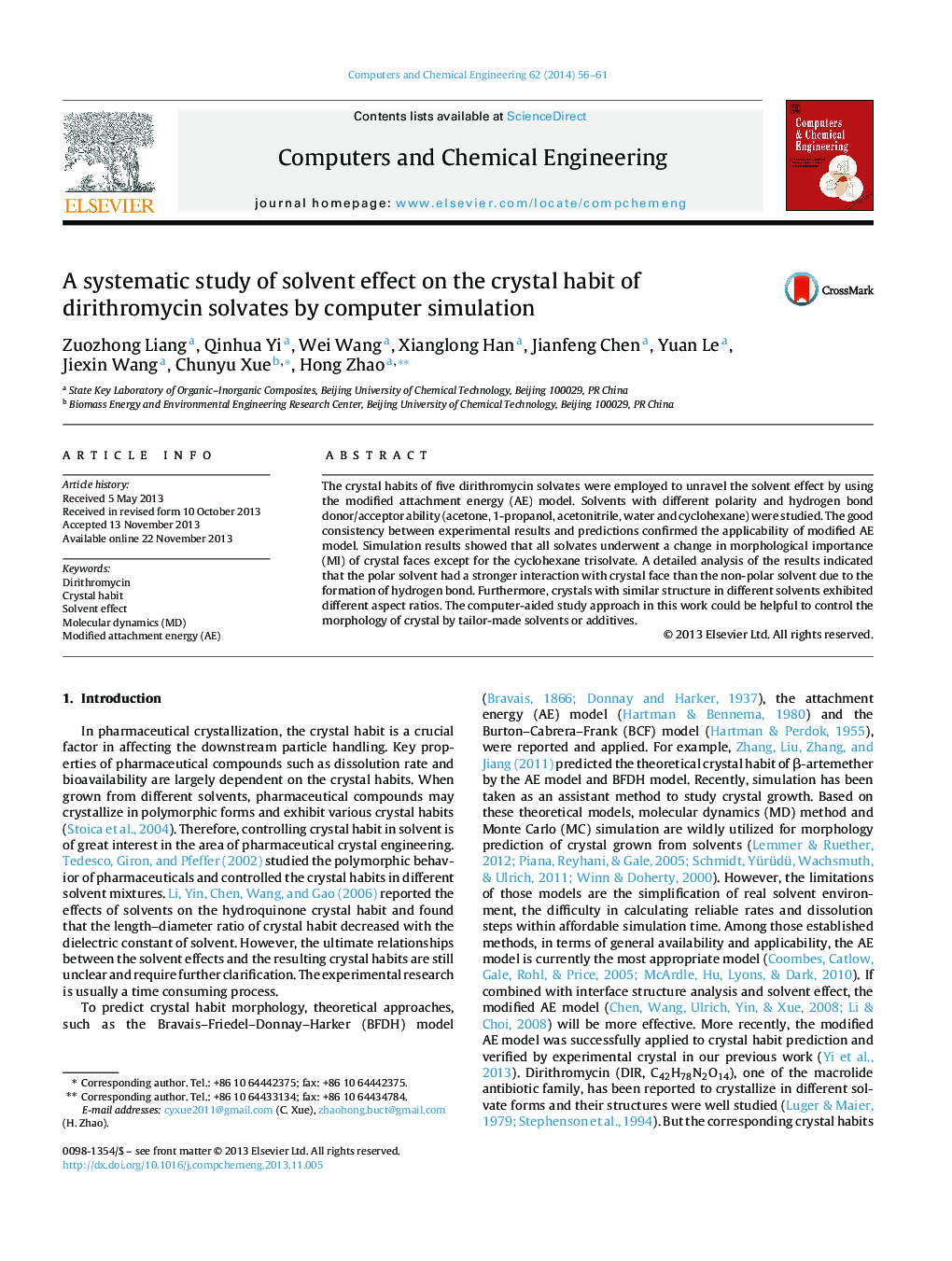| Article ID | Journal | Published Year | Pages | File Type |
|---|---|---|---|---|
| 6595784 | Computers & Chemical Engineering | 2014 | 6 Pages |
Abstract
The crystal habits of five dirithromycin solvates were employed to unravel the solvent effect by using the modified attachment energy (AE) model. Solvents with different polarity and hydrogen bond donor/acceptor ability (acetone, 1-propanol, acetonitrile, water and cyclohexane) were studied. The good consistency between experimental results and predictions confirmed the applicability of modified AE model. Simulation results showed that all solvates underwent a change in morphological importance (MI) of crystal faces except for the cyclohexane trisolvate. A detailed analysis of the results indicated that the polar solvent had a stronger interaction with crystal face than the non-polar solvent due to the formation of hydrogen bond. Furthermore, crystals with similar structure in different solvents exhibited different aspect ratios. The computer-aided study approach in this work could be helpful to control the morphology of crystal by tailor-made solvents or additives.
Related Topics
Physical Sciences and Engineering
Chemical Engineering
Chemical Engineering (General)
Authors
Zuozhong Liang, Qinhua Yi, Wei Wang, Xianglong Han, Jianfeng Chen, Yuan Le, Jiexin Wang, Chunyu Xue, Hong Zhao,
